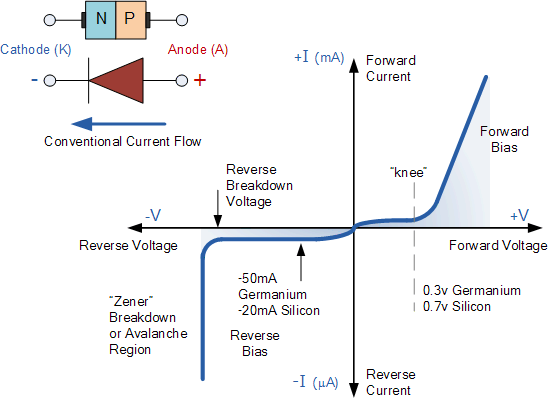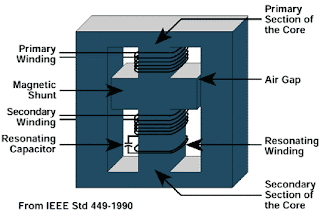I am Parth Kharva share as much as possible knowledge of the electrical engineer. So stay in tune with this blog and connect with other social media with me.
14 December 2020
10 software Must Learn Electrical Engineering
13 October 2020
Type of Diode Power electronics Device and their symbols plus V -I characteristic (Diode section)
Power electronics Device and their symbols plus V -I characteristic
1) Diode
Two types of diode
i) Germanium
Germanium diodes have the advantage of an intrinsically low forward voltage drop, typically 0.3 volts; this low forward voltage drop results in a low power loss and more efficient diode, making it superior in many ways to the silicon diode.
ii) Silicon
A diode is an electrical switch commonly made of semiconductor material, such as silicon. It consists of two terminals: positive (anode) and negative (cathode). It is often used as a rectifier, which is a device that converts AC to DC with current flowing in one direction.
V-I Characteristic of Diode
Sub type of Diode
schottky Diode
A Schottky diode is one type of electronic component, which is also known as a barrier diode. It is widely used in different applications like a mixer, in radio frequency applications, and as a rectifier in power applications. It's a low voltage diode. The power drop is lower compared to the PN junction diodes.
Shockley Diode
Light -emitting Diode
An LED is electronic device that emits light when sufficient current flows throughout the object. LED is very heavily doped.
Photo Diode
A vacuum tube, an electron tube, valve (British usage) or tube (North America),is a device that controls electric current flow in a high vacuum between electrodes to which an electric potential difference has been applied.
The type known as a thermionic tube or thermionic valve uses the phenomenon of thermionic emission of electrons from a hot cathode and is used for a number of fundamental electronic functions such as signal amplification and current rectification. Non-thermionic types, such as a vacuum phototube however, achieve electron emission through the photoelectric effect, and are used for such purposes as the detection of light intensities. In both types, the electrons are accelerated from the cathode to the anode by the electric field in the tube.
The simplest vacuum tube, the diode, invented in 1904 by John Ambrose Fleming, contains only a heated electron-emitting cathode and an anode. Electrons can only flow in one direction through the device—from the cathode to the anode. Adding one or more control grids within the tube allows the current between the cathode and anode to be controlled by the voltage on the grids.
I used data for this blog from internet and random selection so if any issue related to licences or copy right or mention the credit please contact me.
I am engineer not artist or digital creator i'm just beginner here not aware many rules
08 October 2020
Arduino Error l What step to solve error #include in Arduino l Error solution in Arduino? Electrical engineering
If you find error in Arduino using ESP8266 WIFI module?
- Follow the steps!
Then solution is here NODEMCU card with the Arduino IDE, you need to customize it and you must have selected the correct card.
Open Arduino IDE and go to files and click on the preference in the Arduino IDE.
If you find similar error?

1. Add the following link to the Additional Manager URLS section:
GO ---- > File ---> Preferences after that past this link
Add the following link to the Additional Manager URLS section: "http://arduino.esp8266.com/stable/package_esp8266com_index.json"
and press the OK button.
2. The next step is Go yo tools .
Now finally you have to go SKETCH
- Click Sketch > Include Library > Manage Libraries, search for ESP8266WiFi and then install with the latest version.
After above steps, you should compile the sketch normally.
08 June 2020
Types of transformer. Various type of transformer l part 1
Types of Transformer
-
Single
phase transformer
-
Three
phase transformer
- Single phase transformer
- Three phase transformer
-
Single
phase transformer
- Single phase transformer
Types
Configurations
Windings
Winding configuration
Cooling
Core
| ||||








































